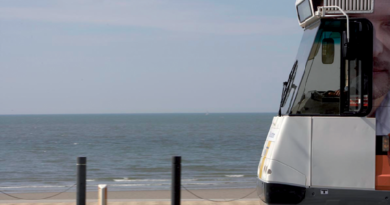A bookstore and volcanic wines: the perfect combo
Brussels is an eclectic city that offers a rich number of activities and opportunities for Friday nights. One of these, is a wine-testing session with ONAV at Librebook. ONAV is the Italian Organization for Wine Tasters; its members, differently from sommeliers, focus mostly on the history of wine, on its production and quality, rather than its combination with food. As Alma Torretta –ONAV commissioner in Brussels’ office- remembered, the organization is formed (and prepares) enologists, wine experts, not sommeliers.
The events started and developed more or less four years ago, at the Istituto Italiano di Cultura and therefore are usually in Italian; nonetheless, they can be hosted also in French or English, if any international would like to get to know a bit better the complex world of wine. The objective of both ONAV and the Istituto is to host two events per month and, of course, to enhance wine culture and history.
When subscribing to the courses, one gets three sessions of twelve classes, that will offer a substantial understanding of wine, of its components and of the various elements that influence its production. Adding three more classes, one could even take the exam to become a certified wine taster at ONAV!
The courses are now held at Librebook, an incredible bookstore and cultural café in Matonge. The shop reflects in several, creative ways the multicultural and eclectic character of the city: its location, first of all, puts it in a lively area of the city, rich in shops and restaurants from all over the world, while its books are in more than 20 languages, reflecting the Babel-like environment of the city. Event its interior design and composition reflect the city: the parquet comes from an ancient theatre stage, while on the back a backdrop from another theatre decorates the wall.
It is here, at Librebook, that yesterday night a new wine-tasting session took place, focusing on biological and natural volcanic wines from Italy. Alma introduced the wines with a brief explication: “Italy’s territory today counts very few active volcanos, but in the past there used to be more. They greatly influenced the composition of the soil, modifying its composition and enriching it of minerals and elements that greatly influence both the growth of grapes and their taste”. The program scheduled four wines, two whites and two reds, from different regions of the country and with different backgrounds.
The first one, was a Soave dei colli Scaligeri (Vigne della Brà, cantine Filippi, 2013), from Veneto. The white wine had a golden color, a light mineral smell and a very light taste of wood. The after taste is slightly fruity, and overall the wine had a balanced and harmonious taste. Alma said that centuries ago, the Adriatic sea and volcanic formations were covering the North of Italy, from Veneto to Piemonte; this influenced the soil, since it left a lot of sand and clay residues that enriched the ground and that now confer to wine an intriguing mineral taste and smell.
The second wine was a Falanghina (Grande Farnia, Campi Flegrei, cantine Iovino, 2016), from Campania. In this case, the wine was not influenced only by the volcanic soil, but also by the solfatare (areas around the volcano in which there is a contained but constant release of sulfur). The wind pushes the sulfuric gases till the vineyard, working as a natural protection for the plant against insects. The result is a white wine with a strong mineral and sulfuric character, fruity although slightly acidic. It is made with quite ripe grapes (in the old-fashioned way), which gives a final taste of applesauce, strong but not necessarily “complex”.
The third wine was a Rosso Arcaico (cantina Occhipinti, 2015), from Lazio. This wine has a quite unusual process of production, that foresees the wine to sit for six months in clay amphoras. The process of production and the geographic area itself (the area around the Bolsena lake is volcanic and the lake itself sits on top of an inactive one) affect this red in an incredible way, giving it a unique taste, that may seem too harsh and complex at a first taste. This wine requires time, both to breath properly and to be understood. It is complex, strong, with a smoked taste and hints of wood.
The last bottle was an Etna Rosso (Val Cerasa, Azienda Bonaccorsi, 2013), from Sicily. The area of production around the Etna is vast, rich and varied: the soil has been exposed several times and in different ways to the volcanic elements, making some parts of the land more fertile than others. This last red was of a dark color, dry and of an elegant and complex taste: one could perceive hints of tobacco, cocoa and Marasca cherry, with a nice and fresh aftertaste of aromatic herbs.
The event was an amazing experience: the participants had different levels of knowledge about wine, but the explanations, information and suggestions offered made everything easier to approach, understand and appreciate. It was incredible discovering through taste how much a single product can change depending on many, small variables, and it was satisfying and inebriating analyzing the wines, appreciating their taste and trying to identify all the aromas. The cozy environment and the familiar, relaxed vibes are also definitively a plus to spend a good night, replicating a usual Italian -and alcoholic- night with friends.



